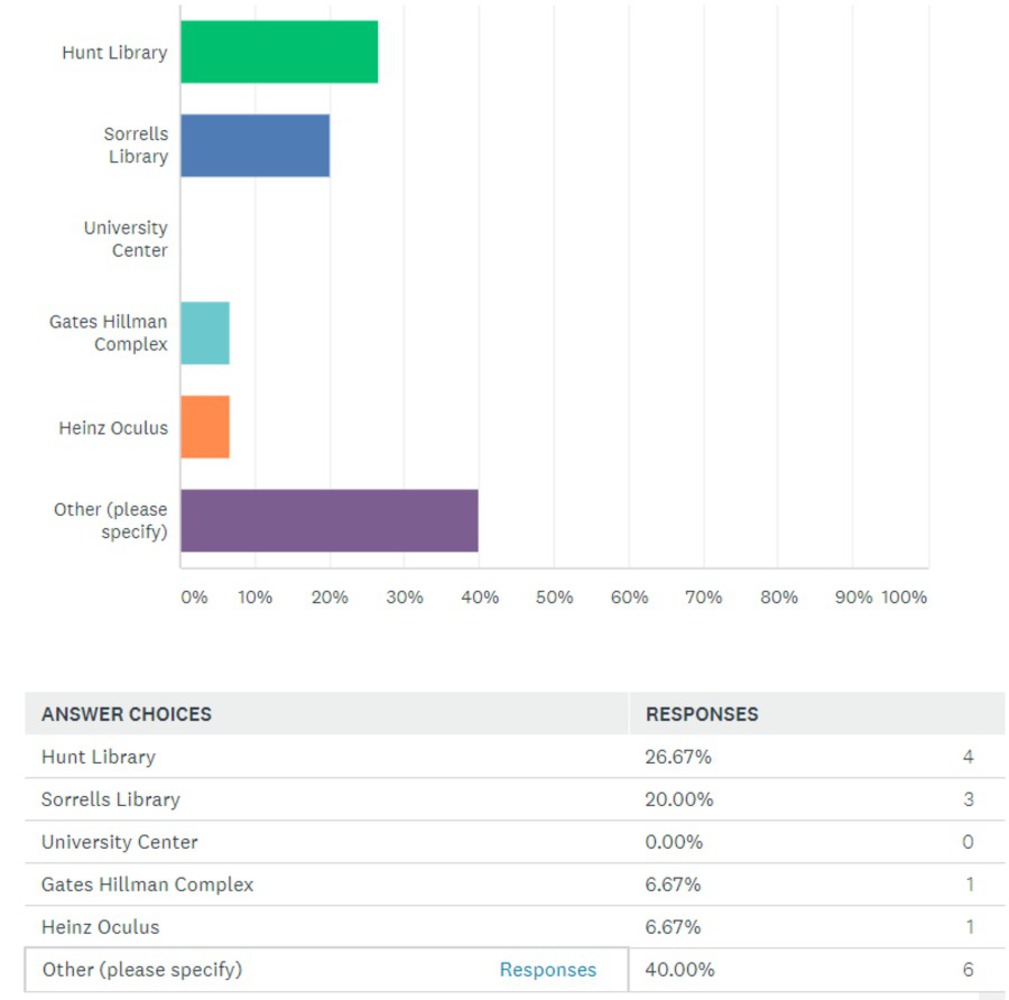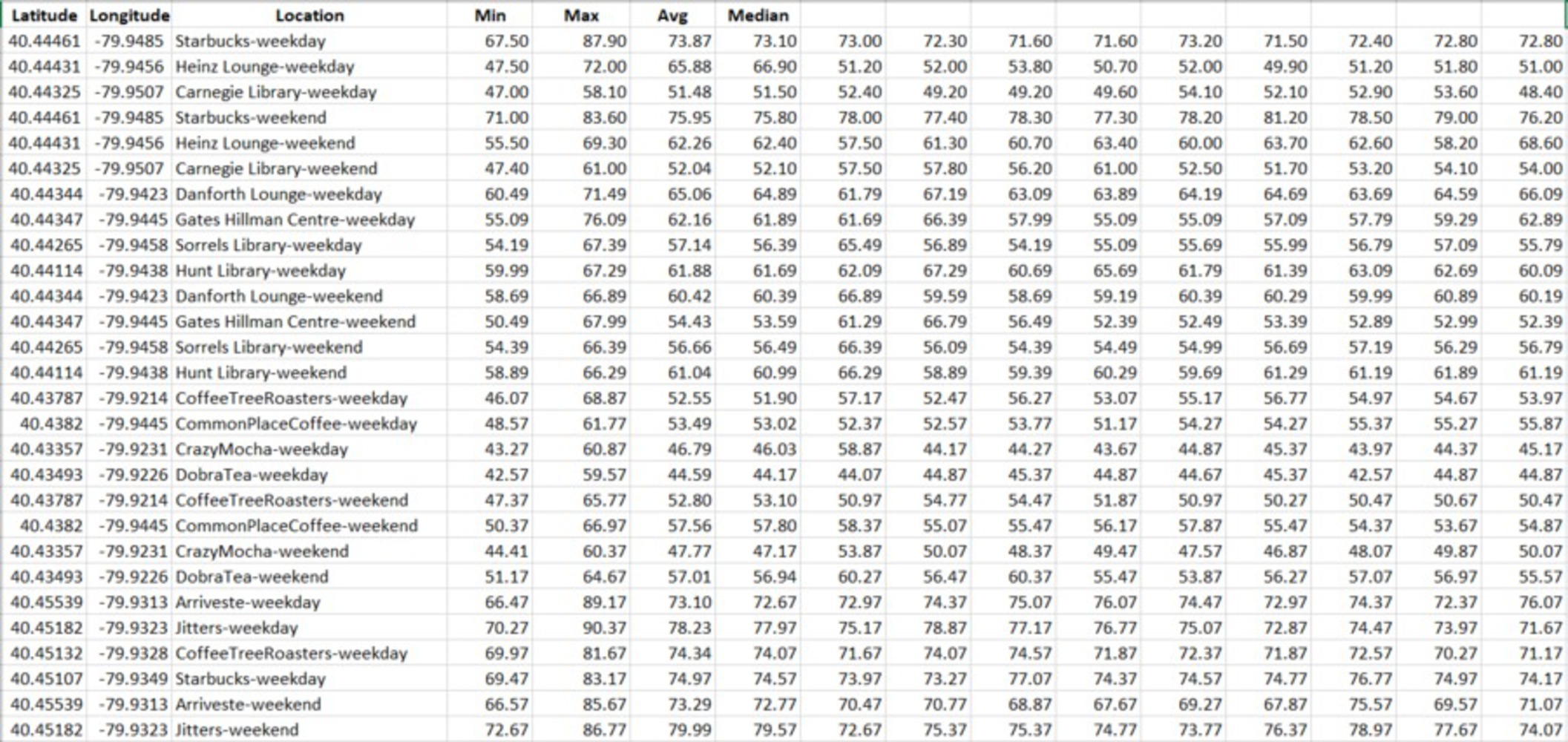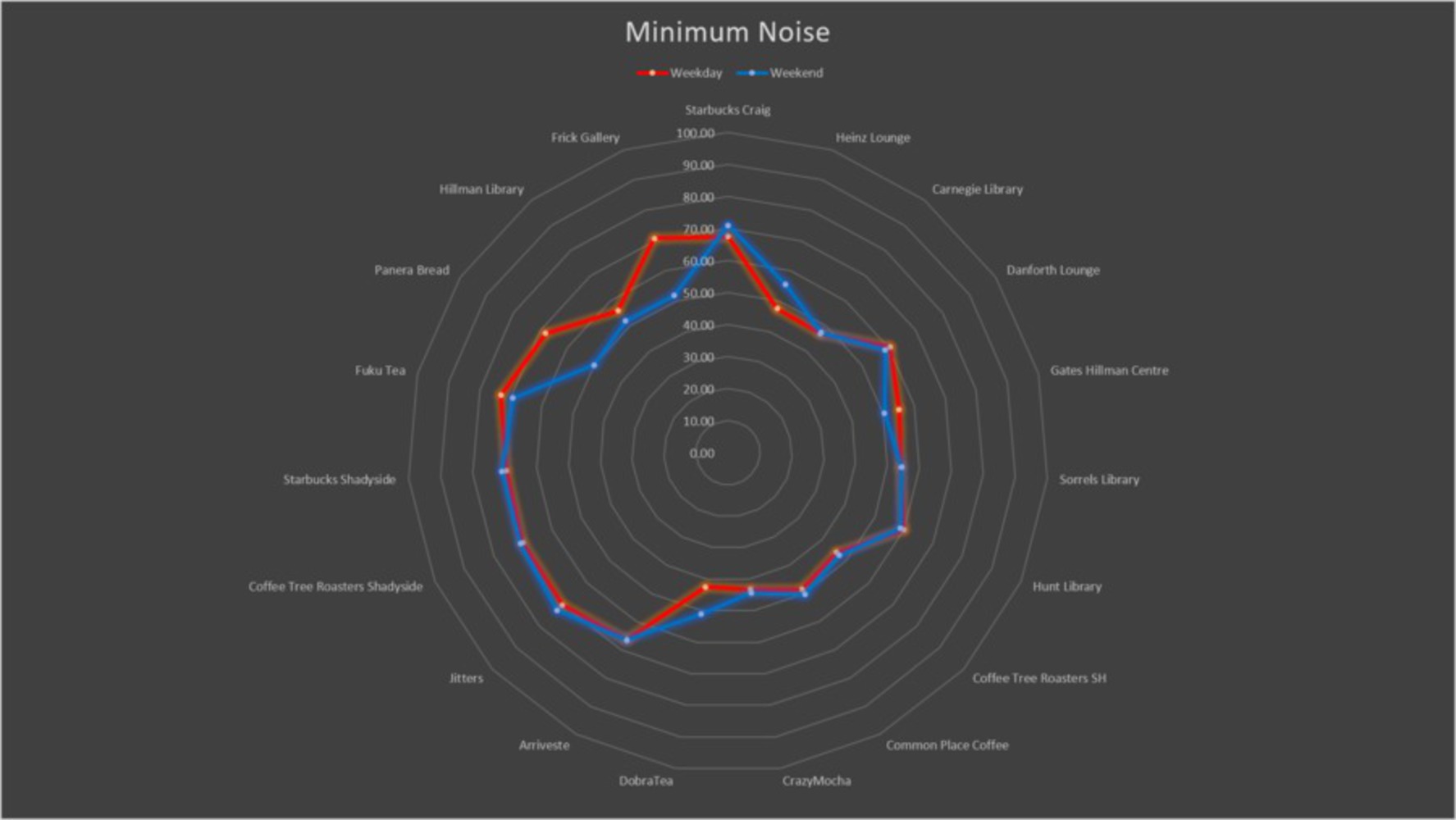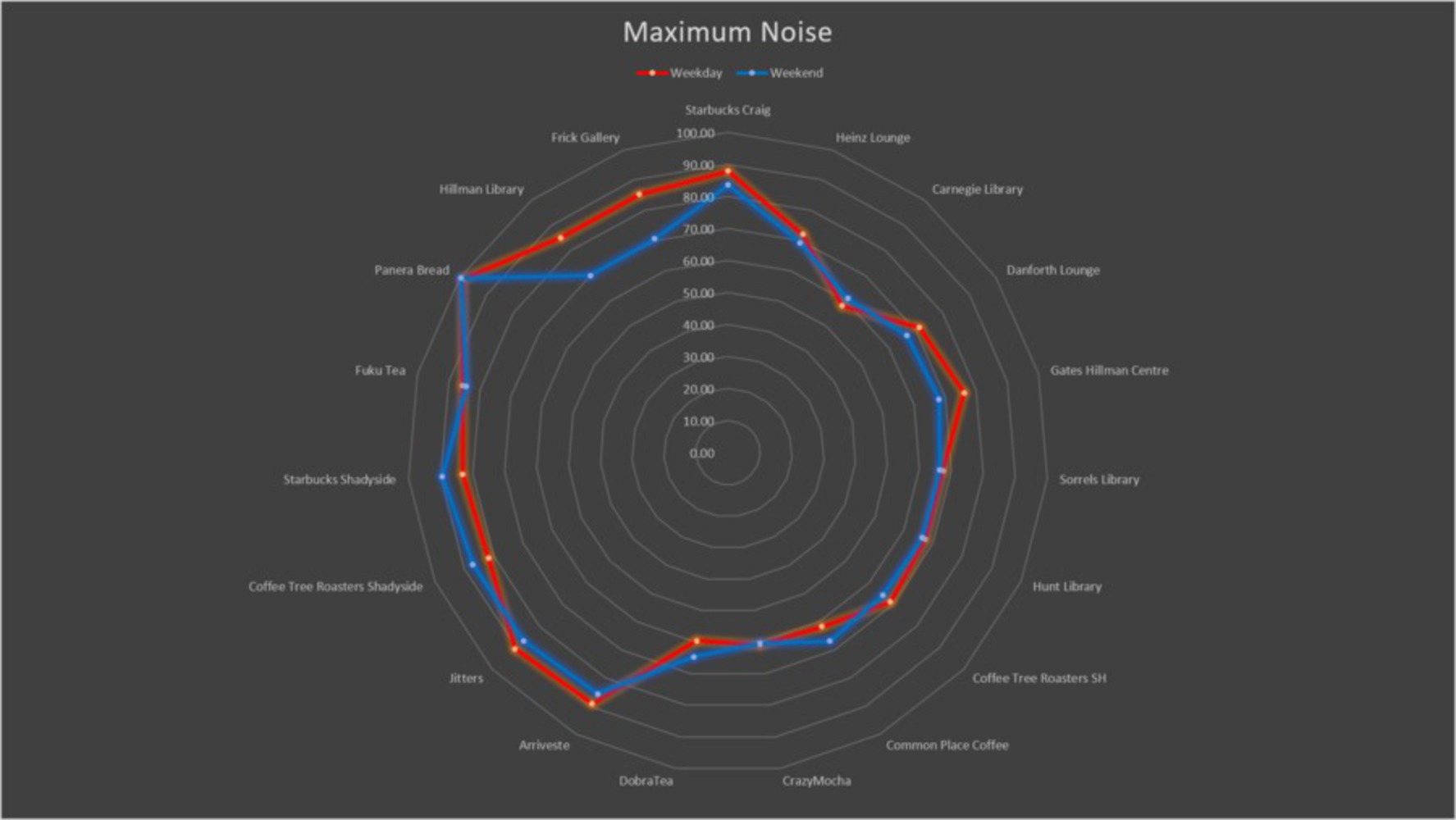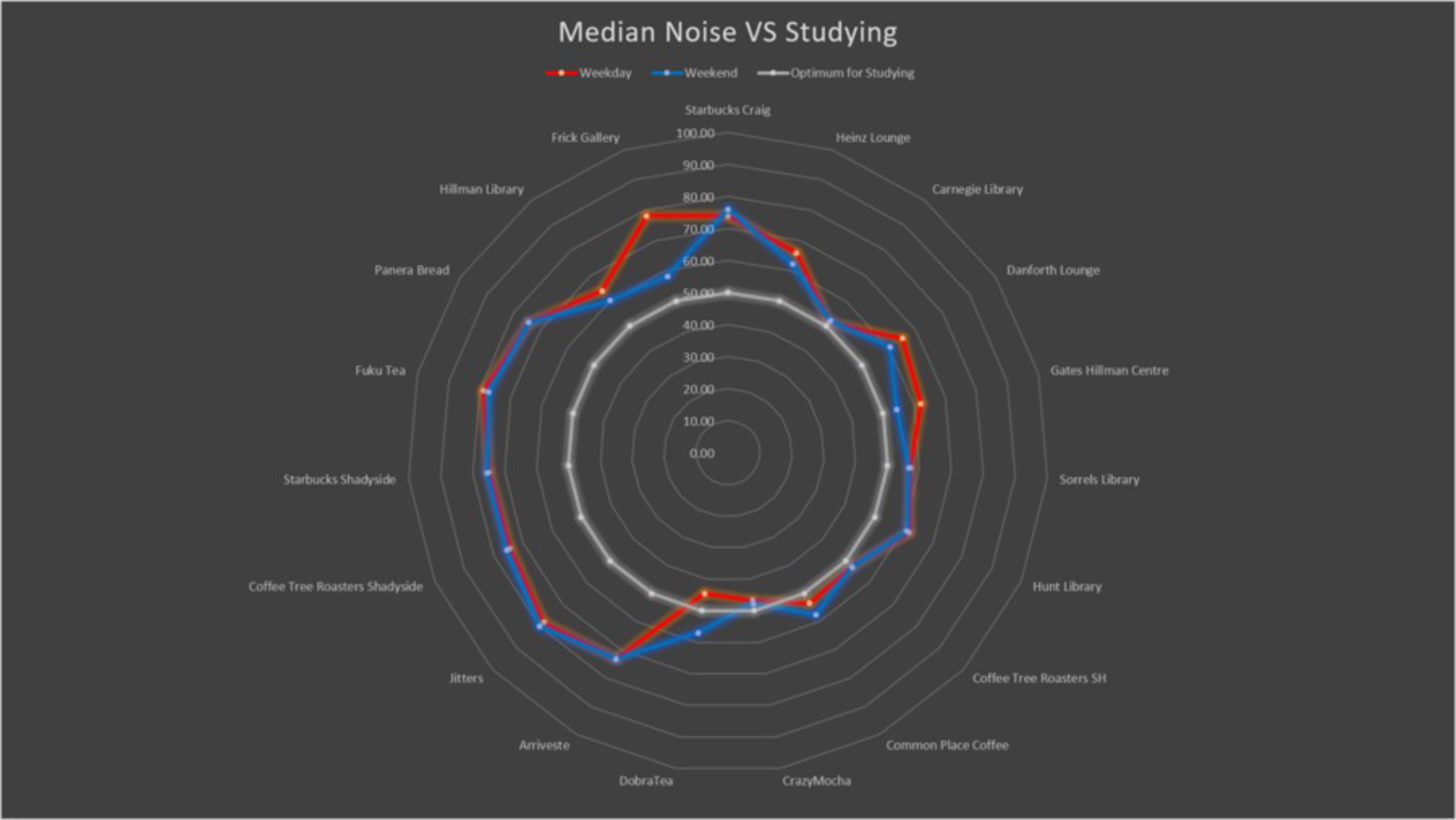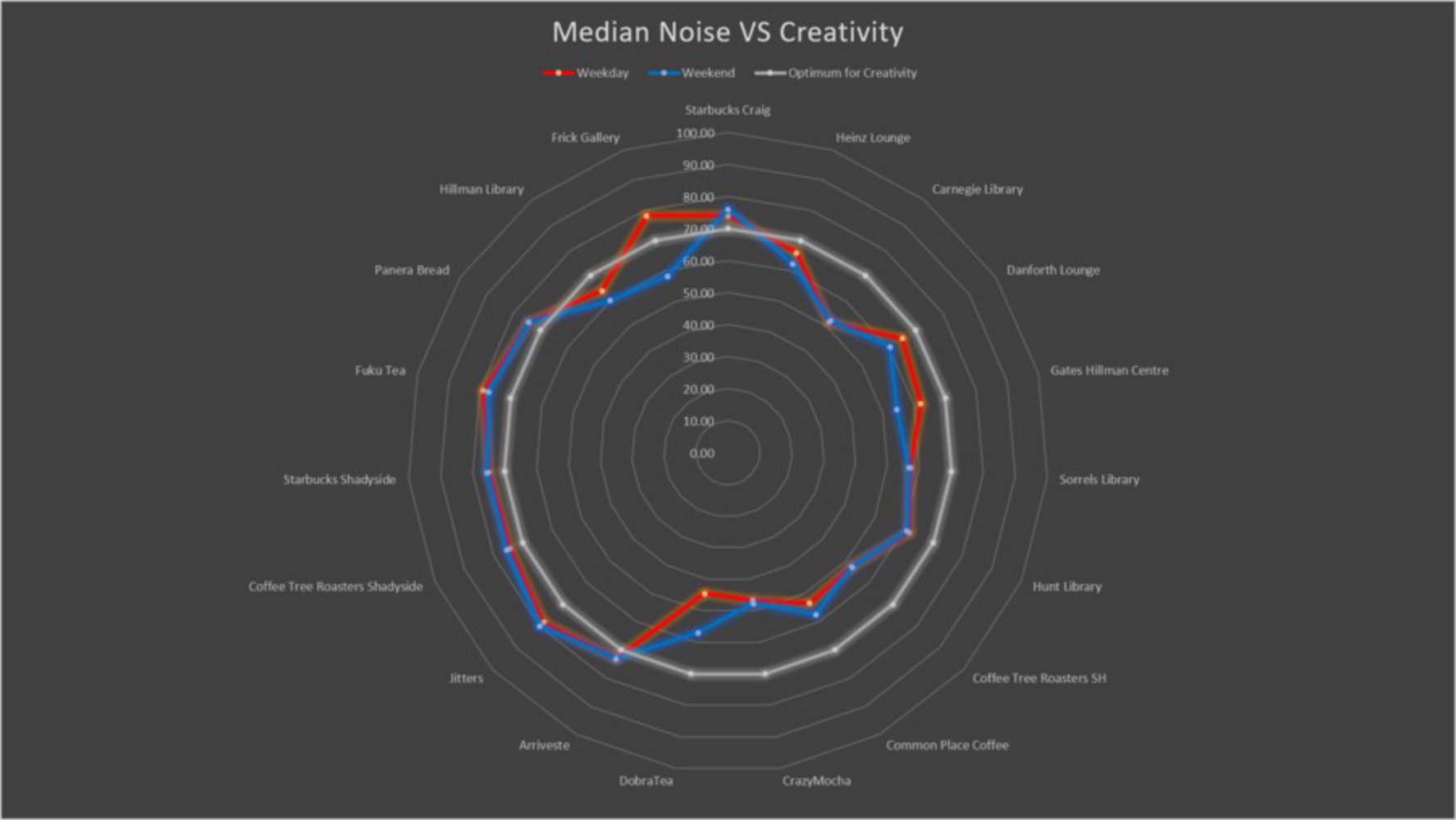Narrative:
Carnegie Mellon University is a centralized hub in Oakland, Pittsburgh. As such, students have an array of communal spaces for studying that range from on-campus facilities, local libraries, coffee shops and even surrounding university facilities that are open to the public. Many of the students live in adjacent neighborhoods such as: Squirrel Hill and Shadyside. Their active commercial districts provide additional gathering spaces for studying and group discussions off campus, making it convenient to do work off campus after school hours and during weekends.
This noise analysis will help to determine the best location to study or work during your free time. Whether you prefer working on or near campus, or off campus closer to your home. Additionally it could map the best locations for the type of work you are seeking: solo quiet reading, versus creative work, based on the median standards established for maximum productivity.
The Poll:
A poll was conducted among Architecture students to see what preferences they have with respect to places to study. We received 15 responses with 60% of the people wanting to study on campus locations listed by us and the rest 40% at other locations.
Of the people who chose to study on other locations, three mentioned Margaret Morrison labs, two like lobby areas on campus an one preferred studying at home.
The below picture gives a brief account of the responses that we got:
